Key takeaways:
- Africa-Europe collaboration fosters innovative research and cultural exchanges, highlighting the importance of communication and trust in building lasting partnerships.
- Collaborative efforts in science, such as a joint renewable energy project, demonstrate how diverse perspectives enhance creativity and problem-solving.
- Challenges in academic-industry partnerships include differing priorities and communication styles, emphasizing the need for clear dialogue and flexible funding.
- Future collaborations should focus on leveraging shared knowledge and establishing lasting networks to sustain initiatives and benefit local communities.
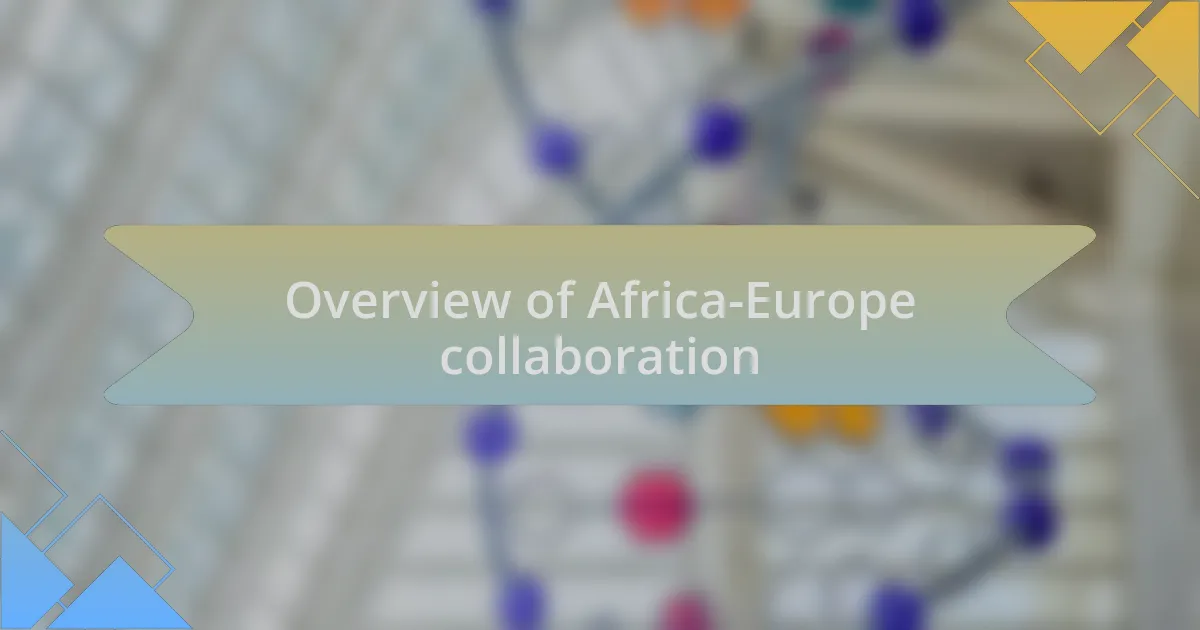
Overview of Africa-Europe collaboration
Collaboration between Africa and Europe has evolved significantly over recent years, opening doors to innovative research projects and cultural exchanges. I remember the excitement I felt when I attended a conference that brought together scientists from both continents. The energy in the room was palpable, with discussions flowing seamlessly from topics like sustainable agriculture to climate change, showcasing the depth of our shared challenges.
One of the remarkable aspects of this collaboration is how it celebrates diversity while blending unique perspectives. Imagine the potential of a team comprising African researchers with grassroots knowledge and European scientists with advanced technical expertise. This blend not only enriches the research outcomes but also fosters a sense of mutual respect and understanding, breaking down barriers that often separate our worlds.
As I reflect on these collaborations, I often wonder: How can we nurture these relationships to ensure they are not just one-time projects but lasting partnerships? From my experience, the key lies in sustaining open lines of communication and building trust over time. When I see these connections flourish, it reassures me that, together, we can tackle the pressing issues facing both continents.
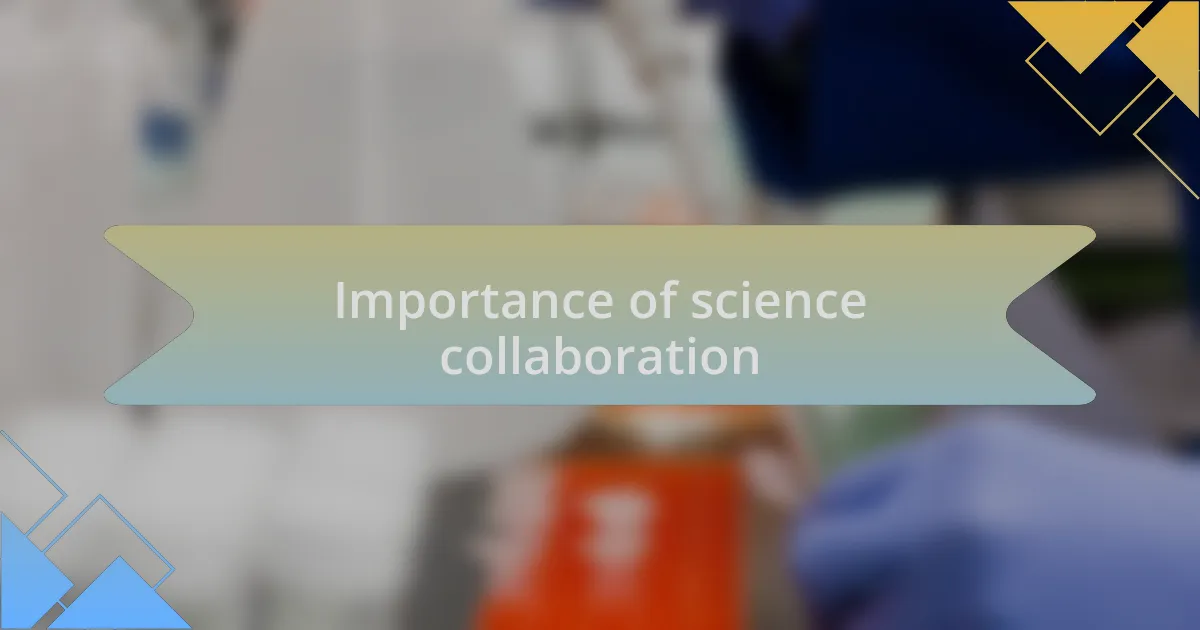
Importance of science collaboration
Building synergies in science collaboration can lead to groundbreaking discoveries that neither continent could achieve alone. I remember participating in a joint project focused on renewable energy solutions, where the blend of local knowledge and technological advances sparked innovative ideas that surprised us all. It made me realize the immense value of combining our strengths.
Moreover, collaboration fosters a sense of community and shared purpose among researchers. During my time working with European colleagues on public health initiatives in Africa, I felt an inspiring camaraderie. It was empowering to see how committed we all were to tackle issues like disease prevention and health education, allowing us to feel collectively responsible for the outcomes.
Have you ever noticed how collaboration can lead to unexpected pathways? I certainly have. Engaging with diverse scientific minds broadens our horizons and encourages us to approach problems from different angles. This shift in perspective not only enhances our work but also inspires more creativity and resilience in overcoming complex challenges.
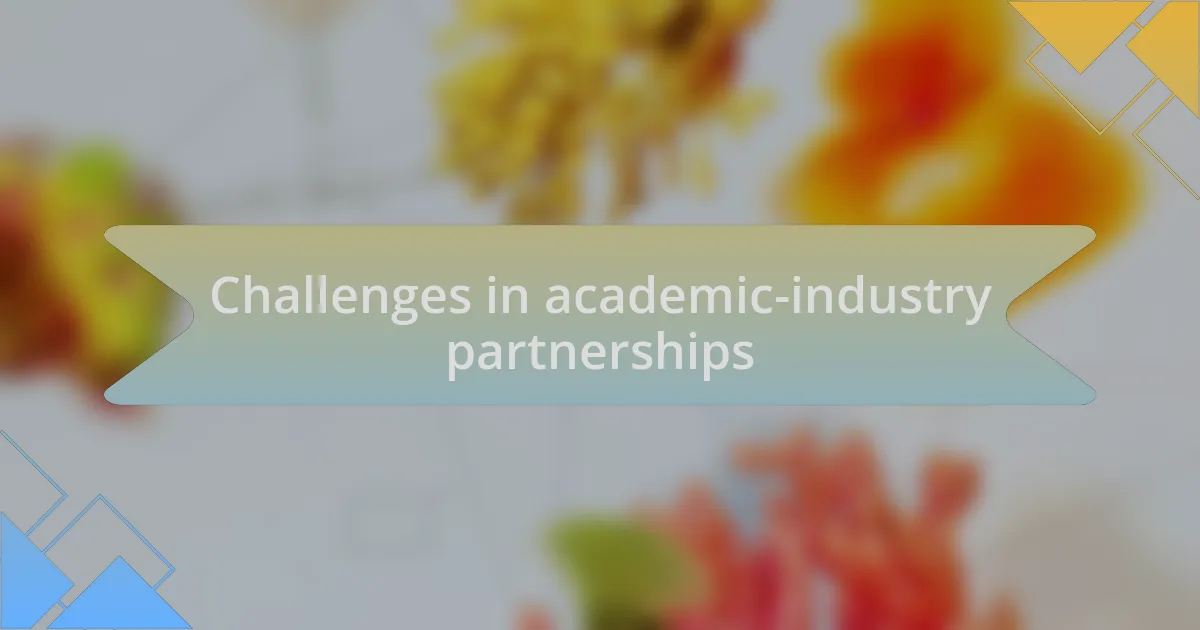
Challenges in academic-industry partnerships
When I think back to my experiences in academic-industry partnerships, one persistent challenge stands out: the differing priorities of academia and industry. I once found myself in a project where researchers aimed for academic rigor, while industry partners were eager for immediate results. This disconnect often leads to frustration; I recall late nights spent trying to align our goals, feeling the pressure from both sides. It’s a delicate balancing act that can either build bridges or create barriers.
Another issue I encountered is the gap in communication styles between the two spheres. During a collaborative workshop, I noticed that industry representatives preferred quick discussions and actionable outcomes, while many academics leaned towards deep theoretical debates. This mismatch not only led to misunderstandings but also created an environment where vital ideas could be lost. It’s crucial, in my opinion, to establish clear communication channels from the outset to keep everyone on the same page.
Moreover, the lack of funding and resources can be a significant hurdle. In a previous initiative aimed at developing sustainable agricultural practices, we struggled to secure adequate support. I saw firsthand how limited financial resources can stifle innovation and slow down progress. It raises an important question: How can we better align funding mechanisms with the needs of these collaborations? From my perspective, creating more flexible funding options could alleviate some of these challenges, allowing us to focus on the science rather than the logistics.
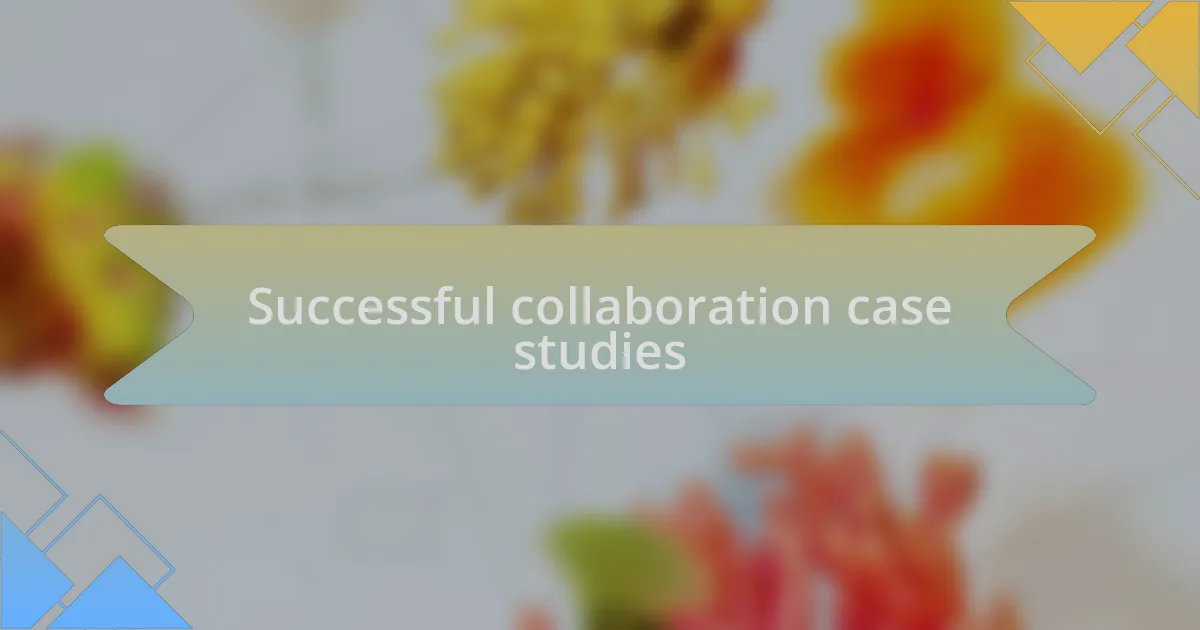
Successful collaboration case studies
Successful collaborations often emerge when there’s a shared vision. I participated in a project that aimed to enhance renewable energy solutions in urban areas. I remember the thrill of seeing both academic researchers and industry experts come together around a common goal. The result? A pilot program that not only advanced scientific understanding but also provided practical solutions for cities grappling with energy shortages. It was a powerful reminder of how alignment can drive impactful results.
In another instance, we had the opportunity to work on a healthcare initiative that aimed to improve patient outcomes through data analytics. I felt that unique blend of excitement and anxiety as we brought together computer scientists and medical professionals. What struck me the most was how our diverse expertise allowed us to uncover insights that neither group could have achieved alone. The collaboration led to a new tool that’s now being used in hospitals across the region, showcasing what happens when we embrace our differences.
Reflecting on these experiences, I can’t help but wonder: what makes these partnerships truly successful? From my viewpoint, it’s about cultivating trust and fostering open dialogue. I remember sitting in a meeting where everyone felt comfortable sharing ideas, no matter how far-fetched they seemed. That atmosphere not only sparked creativity but also paved the way for innovative solutions. These case studies remind us that the magic of collaboration lies in valuing each contributor’s perspective.
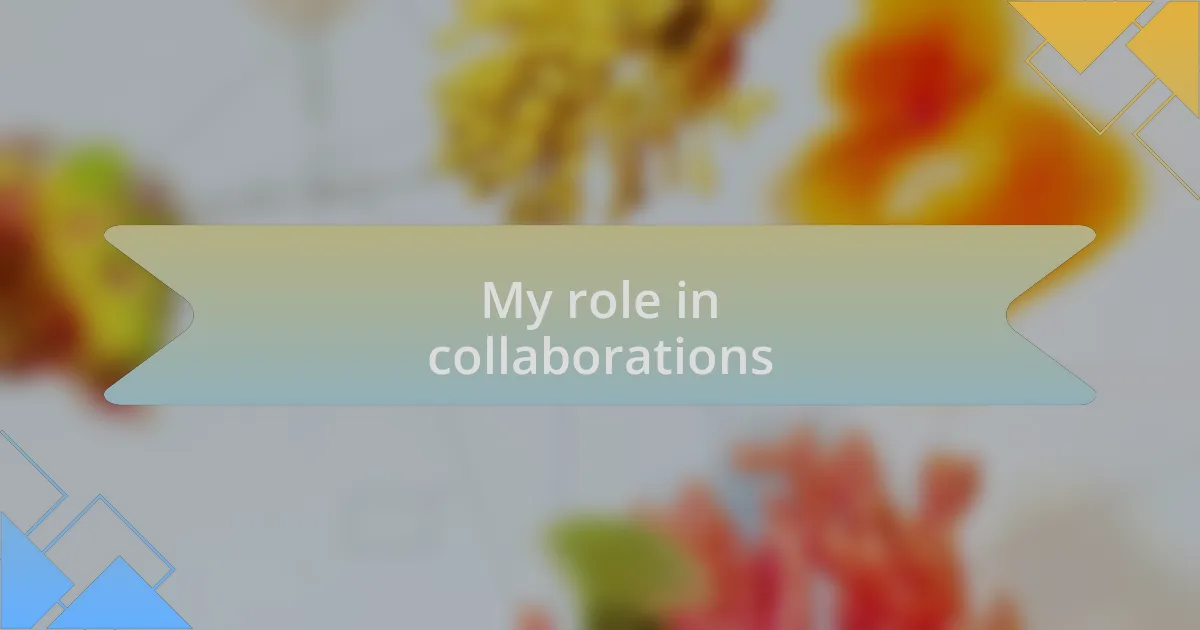
My role in collaborations
In my collaboration efforts, I often find myself in the role of a facilitator, bridging the gap between academia and industry. I recall a particularly rewarding experience where I organized a series of workshops. These sessions encouraged participants to share their research findings and industry challenges openly. Witnessing the sparks of understanding light up their faces was incredibly fulfilling, as it marked the moments where real connections began to form.
One memory that stands out is when I had to negotiate the priorities of both sides during a critical joint venture. It was challenging to navigate differing expectations, but I approached it as a learning experience. I remember feeling a mix of tension and excitement as we worked through our disagreements, eventually agreeing on a path that incorporated both perspectives. This taught me the value of empathy in collaborations; it’s about understanding not just your own goals but also those of your partners.
I often reflect on how my role shapes the outcomes of these collaborations. Do I leverage my strengths to help others shine? In one project, I took on the responsibility of coordinating data flow between different teams. This experience allowed me to help streamline processes, which felt rewarding in itself. Being part of something larger than my individual contributions reminds me that collaboration is not about personal glory but collective success.
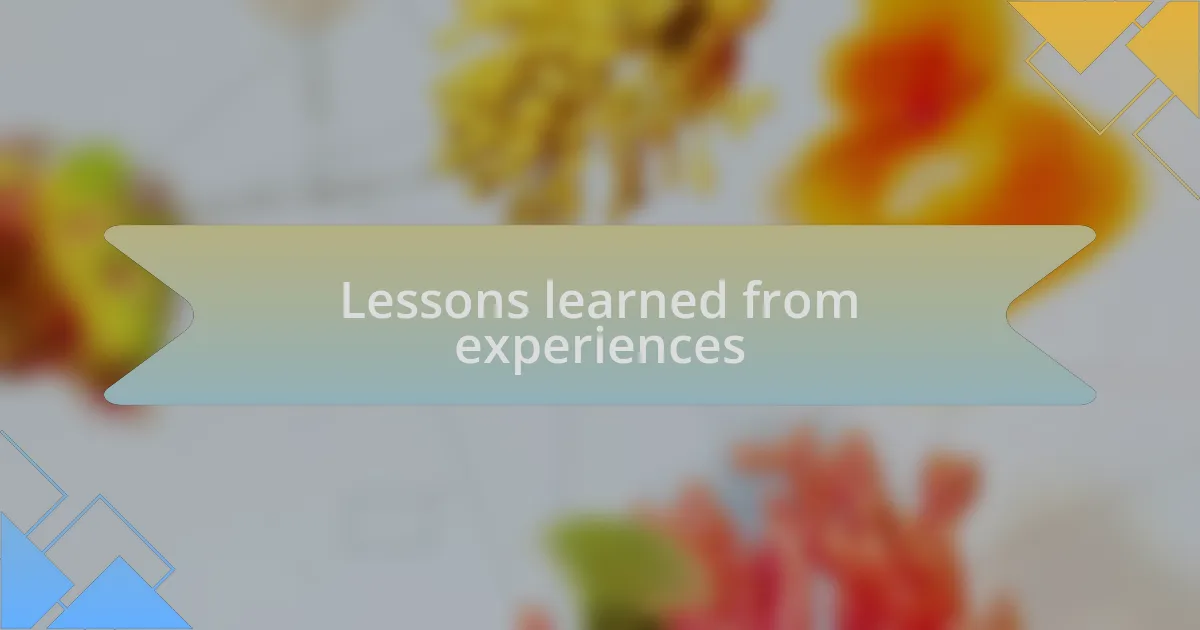
Lessons learned from experiences
Through my experiences, I’ve learned that communication is the heartbeat of collaboration. In one particular project, I noticed how misaligned expectations initially led to frustration. This situation prompted me to initiate regular check-ins, which transformed our working dynamic. I was amazed at how quickly clarity unfolded when everyone had a voice at the table. Have you ever noticed how a simple conversation can shift the course of a project? This taught me that fostering open dialogue is crucial for success.
Another significant lesson emerged from the need to embrace cultural differences. During a workshop with team members from various backgrounds, I realized how different approaches to problem-solving could enrich our outcomes. At times, I felt overwhelmed by the diversity of perspectives, but I soon recognized the beauty in this variety. It sparked innovative ideas that I hadn’t considered before. How often do we let unfamiliarity hinder our growth? I learned to appreciate these differences, as they often lead to creative solutions that are richer and more nuanced.
Lastly, I’ve come to value the importance of flexibility in my collaborations. In one instance, I was convinced that my strategy was the best route forward. However, when feedback suggested a different path, I had to let go of my attachment to my original plan. Initially, it felt unsettling, but I soon discovered that being adaptable opened doors to unexpected opportunities. Have you experienced this kind of revelation? I now understand that sometimes, the most fruitful outcomes arise from being willing to pivot and embrace change.
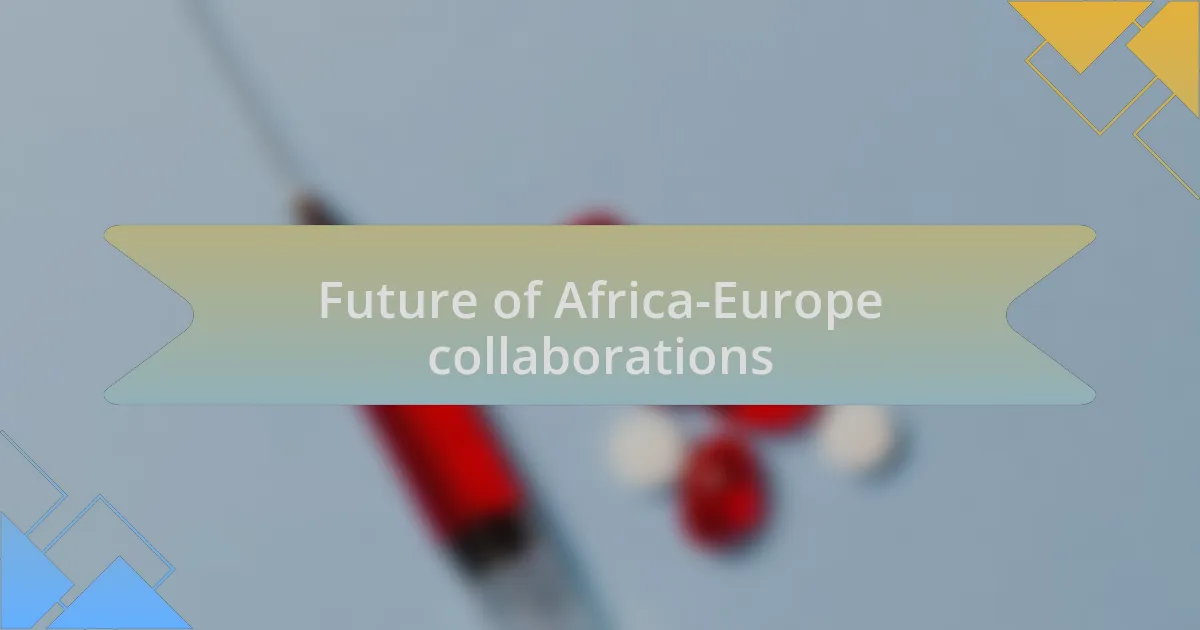
Future of Africa-Europe collaborations
The future of Africa-Europe collaborations holds immense promise as we leverage the strengths of both continents. I remember attending a conference where I witnessed firsthand the excitement surrounding joint research initiatives. Researchers were eager to explore sustainable technologies that address pressing challenges in both regions. This passion highlighted how collaborative endeavors can create solutions that truly benefit local communities while fostering innovation.
As I look ahead, I can’t help but feel hopeful about the potential for knowledge exchange. There’s something powerful about the idea of scientists and scholars from both Africa and Europe sharing their expertise. During a past partnership, I saw how integrating African traditional knowledge with European scientific methodologies led to groundbreaking insights in agriculture. It made me realize that when we combine our resources and experiences, we not only elevate our work but also inspire future generations.
While envisioning future collaborations, the significance of establishing lasting networks stands out. I once participated in a collaborative project where connections made during the initial phases evolved into long-term partnerships. It struck me how critical these relationships are for sustaining collaborative efforts. Have you ever considered how the networks we build today shape the innovations of tomorrow? The future certainly looks brighter when we invest in nurturing these connections, ensuring they flourish well beyond the lifecycle of individual projects.